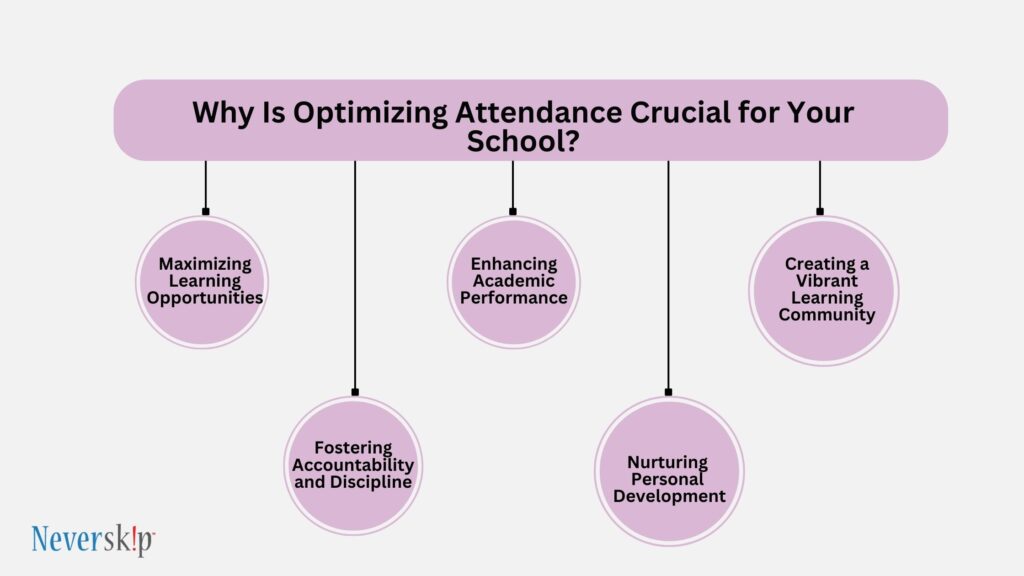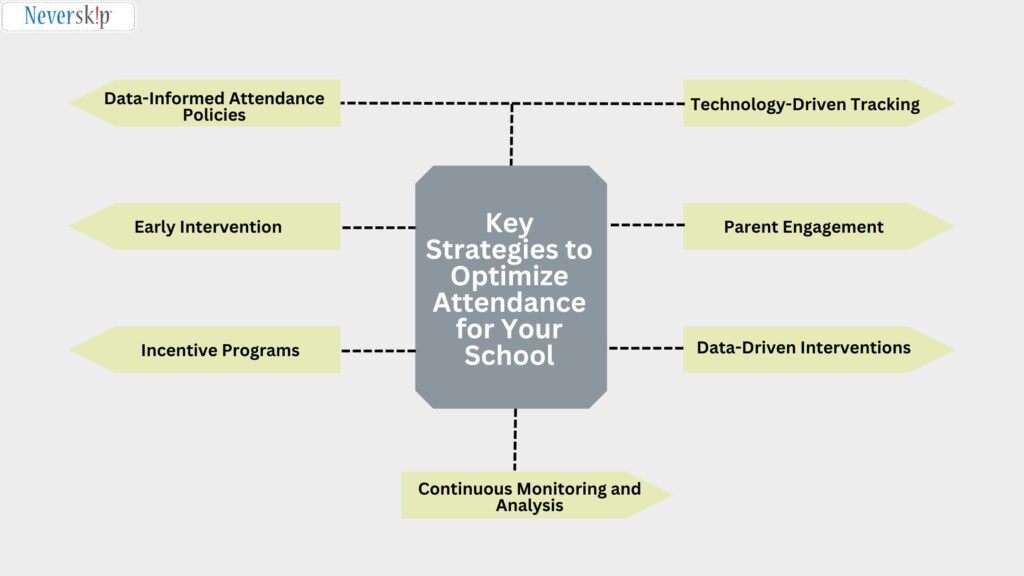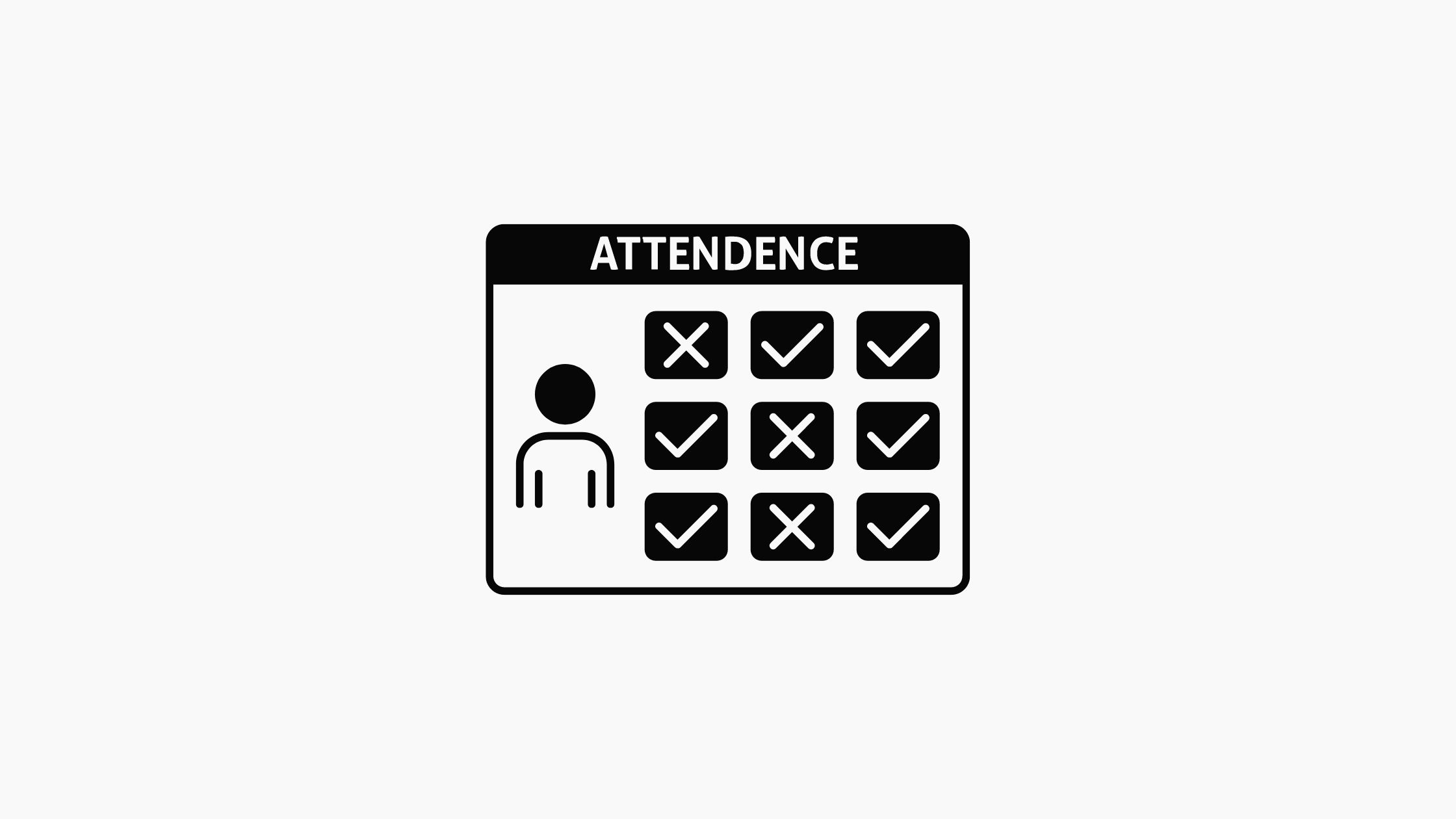Are your students truly engaged in their learning journey? This poignant question encapsulates the pivotal role that attendance optimization plays in education. Beyond mere numbers on an attendance sheet, optimal attendance signifies active participation, enriched classroom dynamics, and comprehensive academic advancement.
Implementing effective strategies to optimize attendance is a multifaceted endeavor that holds profound implications for both students and educational institutions.
In today’s educational landscape, where learning is evolving beyond traditional boundaries, optimizing attendance has emerged as a critical imperative. Studies reveal that when students miss about 18 days of school, roughly 10 percent of the academic year, their academic performance suffers.
On the other hand, students who consistently attend classes are more likely to grasp concepts, actively contribute to discussions, and form a deeper connection with their peers and educators.
Furthermore, attendance optimization contributes to a positive classroom environment, fostering collaborative learning and knowledge sharing. And in this blog, we will guide you through how to optimize the attendance for your school through a robust attendance management solution.
So, let’s get started!
Why Is Optimizing Attendance Crucial for Your School?

In the fast-growing education sector, attendance optimization has transcended its traditional role as a mere numerical record. As schools continue to navigate the changing landscape of education, understanding the significance of attendance optimization becomes paramount.
Here are more insights.
1. Maximizing Learning Opportunities
Attendance optimization directly impacts the learning process by ensuring that students are consistently present in the classroom. Regular attendance allows students to actively participate in lessons, engage in discussions, and collaborate with their peers.
When students are present, they have the opportunity to ask questions, seek clarifications, and interact with their teachers and classmates. This real-time engagement fosters a dynamic learning environment, where concepts are not just taught but comprehended through active involvement.
2. Enhancing Academic Performance
Consistent attendance is closely linked to improved academic performance. Students who attend classes regularly are more likely to complete assignments on time, submit projects promptly, and perform well in assessments.
The continuity in learning aids in the retention of knowledge, making it easier for students to build upon concepts sequentially. Consequently, students with higher attendance rates tend to achieve better grades and exhibit a stronger understanding of the curriculum.
3. Fostering Accountability and Discipline
Attendance optimization instills a sense of responsibility, accountability, and discipline in students. When students commit to attending classes regularly, they cultivate valuable life skills that extend beyond the classroom.
They learn the importance of punctuality, time management, and honoring commitments – attributes that are crucial for success in both academic and professional spheres.
4. Creating a Vibrant Learning Community
A key aspect of optimizing attendance is the creation of a vibrant learning community. When students attend classes consistently, they form stronger bonds with their peers and educators.
This sense of community encourages collaborative learning, where students share insights, exchange ideas, and engage in group projects. The classroom transforms into a space where diverse perspectives converge, enriching the learning experience for everyone involved.
5. Nurturing Personal Development
Beyond academics, attendance optimization contributes to the holistic development of students. By attending classes regularly, students have the chance to participate in extracurricular activities, workshops, and events that complement their academic journey.
These experiences enhance their social skills, boost their self-confidence, and expose them to a myriad of opportunities that contribute to their personal growth.
See More: 10 Best Practices to Enhance the Parent-Teacher Communication for Your School
Optimizing Attendance for Your School: Key Strategies

Now, let’s delve into the key strategies that educational institutions can employ to optimize attendance and harness the power of student attendance data.
1. Data-Informed Attendance Policies
An effective attendance optimization strategy begins with well-defined attendance policies. Utilize student attendance data to design policies that strike a balance between accountability and flexibility.
Analyze trends in attendance data to identify patterns of absenteeism and tardiness, allowing you to tailor policies that address specific issues.
2. Technology-Driven Tracking
Leverage technology to streamline attendance tracking. Implement digital attendance management systems that allow teachers to mark attendance quickly and accurately. These systems can be integrated with student information databases, providing real-time insights into attendance records.
Automated notifications can alert parents about their child’s attendance, keeping them informed and engaged in their child’s educational journey.
3. Early Intervention
Student attendance data can serve as an early warning system for potential issues. Identify students with a history of irregular attendance and intervene promptly.
Assign counselors or mentors to work closely with these students, understanding the underlying reasons for absenteeism and providing necessary support. Early intervention can prevent attendance problems from escalating into more significant academic challenges.
4. Incentive Programs
Create incentive programs that reward consistent attendance. Use student attendance data to track and acknowledge students who maintain good attendance records.
Recognition, certificates, or small rewards can serve as motivators for students to attend classes regularly. Such positive reinforcement fosters a sense of achievement and encourages students to prioritize attendance.
5. Parent Engagement
Engage parents as partners in attendance optimization. Share student attendance data with parents regularly, allowing them to monitor their child’s attendance performance.
Organize parent-teacher conferences to discuss attendance trends, highlighting its impact on academic progress. Collaborative efforts between schools and parents can lead to a more supportive environment that promotes attendance.
6. Data-Driven Interventions
Employ a data-driven approach to identify specific interventions for at-risk students. Utilize student attendance data to categorize students based on attendance patterns.
Tailor interventions based on these categories – from counseling for individual cases to group workshops addressing common reasons for absenteeism. This personalized approach ensures that interventions are effective and targeted.
7. Continuous Monitoring and Analysis
Optimizing attendance is an ongoing process. Continuously monitor student attendance data and analyze trends to gauge the effectiveness of your strategies. Identify areas of improvement and adapt your approach accordingly.
Regular analysis enables schools to make informed decisions and refine attendance optimization efforts over time.
See More: How To Choose the Best Learning Management System for Your School?

To Conclude
It is evident that the optimization of attendance is not just a mere administrative task; it’s a vital element that shapes student engagement, academic success, and the overall learning experience. As educational institutions navigate the evolving landscape of learning, adopting the right strategies becomes imperative.
For schools seeking an integrated solution, Neverskip’s attendance management system emerges as a transformative tool. Not only does it automate the strategic processes mentioned above, but it also offers a host of competitive features that elevate attendance management.
From providing comprehensive class attendance insights to facilitating seamless RFID attendance management, and from conducting in-depth student evaluations to ensuring efficient communication with parents, Neverskip’s system is designed to empower educational institutions with a holistic approach to attendance optimization.
In a landscape where student engagement and academic success are paramount, Neverskip’s attendance management system stands as a crucial ally, aligning technology with the best attendance optimization strategies.
Book a free demo today to explore more.







